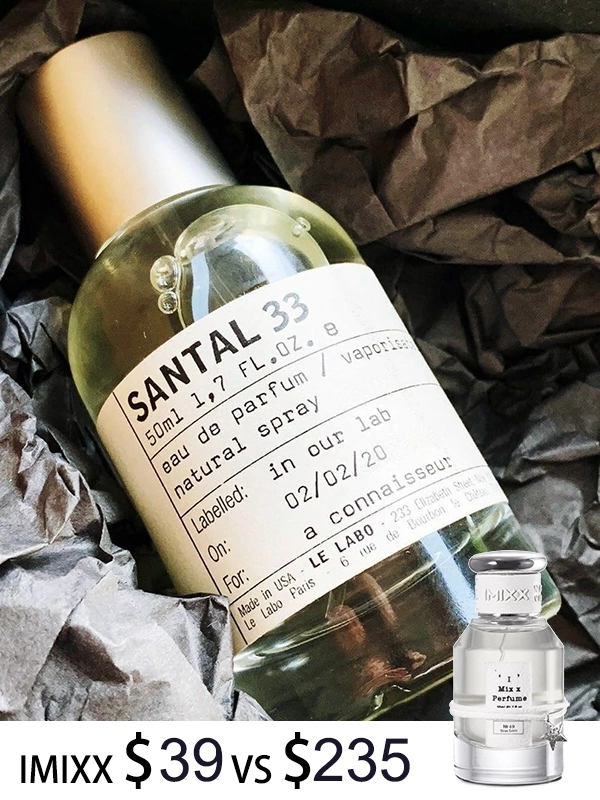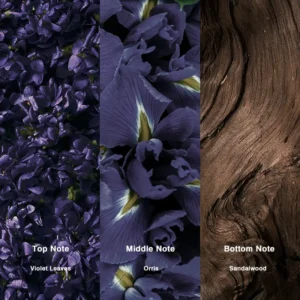Which Is Better in 2024: Santal 26 vs Santal 33?When it comes to iconic luxury fragrances, few names hold as much prestige and allure as Le Labo‘s Santal 33. A fragrance that has achieved cult status in the perfume world, Santal 33 is revered for its complex and captivating scent profile, dominated by sandalwood. But another scent has been making waves recently, known as Santal 26. As more perfume lovers seek the best fragrance to suit their tastes, many wonder: Which is better in 2024: Santal 26 or Santal 33?
In this article, we’ll compare these two captivating scents in depth. We’ll analyze everything from scent profiles and longevity to pricing, performance, and ideal occasions, helping you decide which one is the best fit for you. Whether you’re a fragrance connoisseur in the US or someone just beginning your scent journey, we’ll give you all the information you need to make an informed choice.
A Quick Summary: Santal 26 vs Santal 33

At first glance, Santal 26 and Santal 33 might seem quite similar, especially since both share sandalwood as their key note. However, the overall experience they offer is quite distinct.
- Santal 33 is a complex, unisex fragrance that’s widely recognized for its smoky, spicy, and woody notes. It features a prominent blend of sandalwood, cedarwood, iris, and cardamom, making it an all-season fragrance suitable for both day and night.
- Santal 26, while also centered around sandalwood, tends to lean more on the creamy, soft, and slightly sweeter side. It’s a warmer, smoother fragrance that pairs sandalwood with soft floral notes and a touch of vanilla, making it a great option for those looking for something slightly more subtle yet still woody.
Both perfumes are known for their depth and rich complexity. They offer distinct experiences, and your choice will depend on personal preferences such as scent intensity, projection, and occasion.
Comparing the Two: Santal 26 vs Santal 33
Below is a detailed comparison table to help you better understand the key differences between Santal 26 and Santal 33:
| Attribute | Santal 26 | Santal 33 |
|---|---|---|
| Key Notes | Sandalwood, Vanilla, Soft Floral | Sandalwood, Cedarwood, Cardamom, Iris, Leather |
| Fragrance Family | Woody, Sweet, Creamy | Woody, Spicy, Smoky |
| Longevity | Moderate (6-8 hours) | Long-lasting (8-10 hours) |
| Projection | Subtle to Moderate | Strong, noticeable |
| Best For | Casual Wear, Daytime, Warm Weather | Evening Wear, Formal, All-Season |
| Price Range | Affordable Luxury Dupes Available | High-end Luxury |
| Gender | Unisex, slightly more feminine | Unisex, slightly more masculine |
This table showcases key factors that set Santal 26 and Santal 33 apart. While both fragrances are similar in many ways, the differences in their core composition and overall vibe play a huge role in choosing the right one for you.
Key Notes: What Makes Santal 26 and Santal 33 Stand Out?
What are the Key Notes in Santal 26?
Santal 26 is centered around sandalwood, but it has additional soft floral and creamy notes that add a subtle sweetness. You’ll find hints of vanilla, amber, and a touch of musk, which make it feel both comforting and luxurious. It’s an ideal fragrance for someone who enjoys a more subdued, smooth woody scent without the intense spice of Santal 33.
What are the Key Notes in Santal 33?
Santal 33, on the other hand, is much more complex and bold. Sandalwood is the key note here as well, but it is accompanied by cedarwood, cardamom, iris, and a hint of leather, creating a much more smoky, spicy fragrance. Santal 33 is often described as unisex, with an earthy, sophisticated aura. It’s a fragrance that stands out and demands attention.
Which One Lasts Longer, Santal 26 or Santal 33?
When it comes to longevity, Santal 33 is the clear winner. Known for its strong projection and long-lasting power, Santal 33 can easily last 8-10 hours on the skin, making it ideal for evening events or long days.
Santal 26, while still lasting several hours (around 6-8 hours), doesn’t have the same enduring power. However, its softer composition can make it a better choice for those who prefer a fragrance that doesn’t overwhelm but lingers gently.
Santal 33 vs Santal 26: Which Is Better for Different Occasions?
Santal 33 is often hailed as a fragrance that can be worn in formal events, evenings, or night outs. Its bold projection makes it stand out in a crowd, making it perfect for occasions where you want to make a statement. It’s also ideal for cooler weather due to its deeper, spicy notes.
In contrast, Santal 26 is better suited for daytime wear and casual occasions. Its creamy, smooth profile makes it an excellent choice for warmer weather or office settings. It’s more intimate, less intense, and more likely to suit those who enjoy something subtle yet still luxurious.
Performance in Different Weather: Santal 33 vs Santal 26

How Does Santal 33 Perform in Hot and Cold Weather?
Santal 33 is a versatile fragrance that works well in both cold and hot climates. In cooler weather, its bold woody and spicy notes hold their ground, while in warm weather, it maintains its complexity without becoming overwhelming. However, in the heat, the spicy notes can become more intense, so it’s best to wear it sparingly in high temperatures.
How Does Santal 26 Perform in Hot and Cold Weather?
On the other hand, Santal 26 is a more adaptable fragrance for warm weather. Its creamy, softer profile makes it a fantastic choice for spring and summer days. During the colder months, it also adds a cozy, comforting touch but doesn’t project as intensely as Santal 33.
FAQ: Santal 26 vs Santal 33
1. What is the difference in scent between Santal 26 and Santal 33?
Santal 33 and Santal 26 both revolve around the essence of sandalwood, but their compositions diverge. Santal 33 is more complex and multifaceted, with additional spicy, smoky, and woody notes like cedarwood and cardamom. It is bold, vibrant, and has a leathery depth. In contrast, Santal 26 is smoother and softer, featuring a more subdued blend of vanilla and soft florals, making it sweeter and creamier with a more approachable feel.
2. Which one lasts longer, Santal 26 or Santal 33?
Generally, Santal 33 has a stronger longevity compared to Santal 26. Santal 33’s composition, with its dense, spicy notes, allows it to last up to 8-10 hours. Santal 26, while still long-lasting, typically stays on the skin for around 6-8 hours, making it a bit less persistent.
3. Is Santal 33 worth the price compared to Santal 26?
The value of Santal 33 over Santal 26 depends on your personal preferences. Santal 33 offers a more complex and bold scent profile, which could justify the higher price for those who prefer an intense, long-lasting fragrance. On the other hand, Santal 26 offers a softer, more accessible fragrance at a slightly lower price point. If you’re looking for something lighter and sweeter, Santal 26 might be more worth the investment.
4. Can Santal 26 be used as a personal fragrance?
Yes, Santal 26 is quite versatile and works well as a personal fragrance. Its smooth, woody, and vanilla notes make it suitable for both men and women, offering a gentle yet sophisticated scent that is great for everyday wear, especially in the daytime or during casual settings.
5. How do Santal 26 and Santal 33 compare in terms of projection?
Santal 33 has a more prominent and bold projection due to its spicy, woody complexity. It can be noticed from a distance and creates a strong scent trail. In contrast, Santal 26 has a more subtle and intimate projection, which makes it ideal for those who prefer a fragrance that stays close to the skin and doesn’t overwhelm the senses.
6. What are the key notes in Santal 26 and Santal 33?
- Santal 26: Sandalwood, vanilla, soft florals
- Santal 33: Sandalwood, cedarwood, cardamom, iris, leather
These key notes give each fragrance its unique character, with Santal 26 leaning more toward a smooth, creamy woodiness and Santal 33 showcasing a more layered, spicy, and smoky wood profile.
7. What occasions are best suited for Santal 33 versus Santal 26?
- Santal 33 is perfect for evening events, formal occasions, or colder weather, where its bold and lasting scent can shine. Its complexity makes it ideal for those who want to make a statement.
- Santal 26 is better suited for daytime wear, casual settings, or warm weather. Its softer, smoother composition makes it a great choice for more relaxed occasions.
8. Is Santal 33 better for formal events or casual wear?
Santal 33 is best for formal events due to its strong, sophisticated projection and complex, spicy profile. It’s the perfect fragrance for making a bold impression in more upscale settings, such as dinner parties, galas, or evening outings.
9. What are the main differences in longevity between Santal 26 and Santal 33?
While both fragrances offer decent longevity, Santal 33 tends to outlast Santal 26 by a few hours. The more intense, dense composition of Santal 33 means it sticks around longer, while Santal 26 might fade more quickly, making it a better option for those who prefer a lighter fragrance with a shorter wear time.
10. Which scent is more unisex, Santal 26 or Santal 33?

Santal 26 is arguably more unisex due to its softer, sweeter composition that blends seamlessly with both masculine and feminine profiles. Santal 33, while still unisex, leans slightly more masculine due to its strong leather and smoky notes, making it more suited to individuals who enjoy bolder, more assertive fragrances.
11. Does Santal 26 have a sweeter or more woody scent than Santal 33?
Santal 26 is sweeter and creamier, with its vanilla and floral notes balancing out the sandalwood to create a smooth, slightly sweet fragrance. On the other hand, Santal 33 has a more woody and smoky scent, with added spices like cardamom and leather giving it a more complex and earthy profile.
12. How does the performance of Santal 33 compare in hot weather vs cold weather?
Santal 33 performs best in colder weather. Its deep, rich, and smoky notes tend to resonate more in cool conditions, where the scent can develop fully without being overwhelming. In hot weather, it might come off too strong for some. Santal 26, with its softer and lighter profile, is better suited for warm weather, offering a more balanced, pleasant scent in those conditions.









